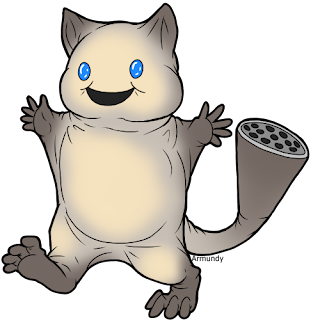Wamp

The wamp ( Caudasal lakeshorekearni ) is one of the fearsome critters of lumberjack lore. It was a small and peaceful creature. The wamp was about the size of a raccoon and has a salt bag shaped body. It had a long, hollow tail with a salt shaker at the end and it would use this tail to leave salt licks for deer over the winter. Hunters caught wise to this and started following the wamp around to more easily find deer. So the wamp's efforts to help deer ended up in them being hunted down instead. Because April Fools is tomorrow I wanted a feature a light hearted and silly creature this time.



